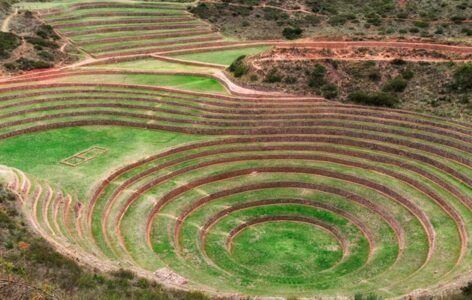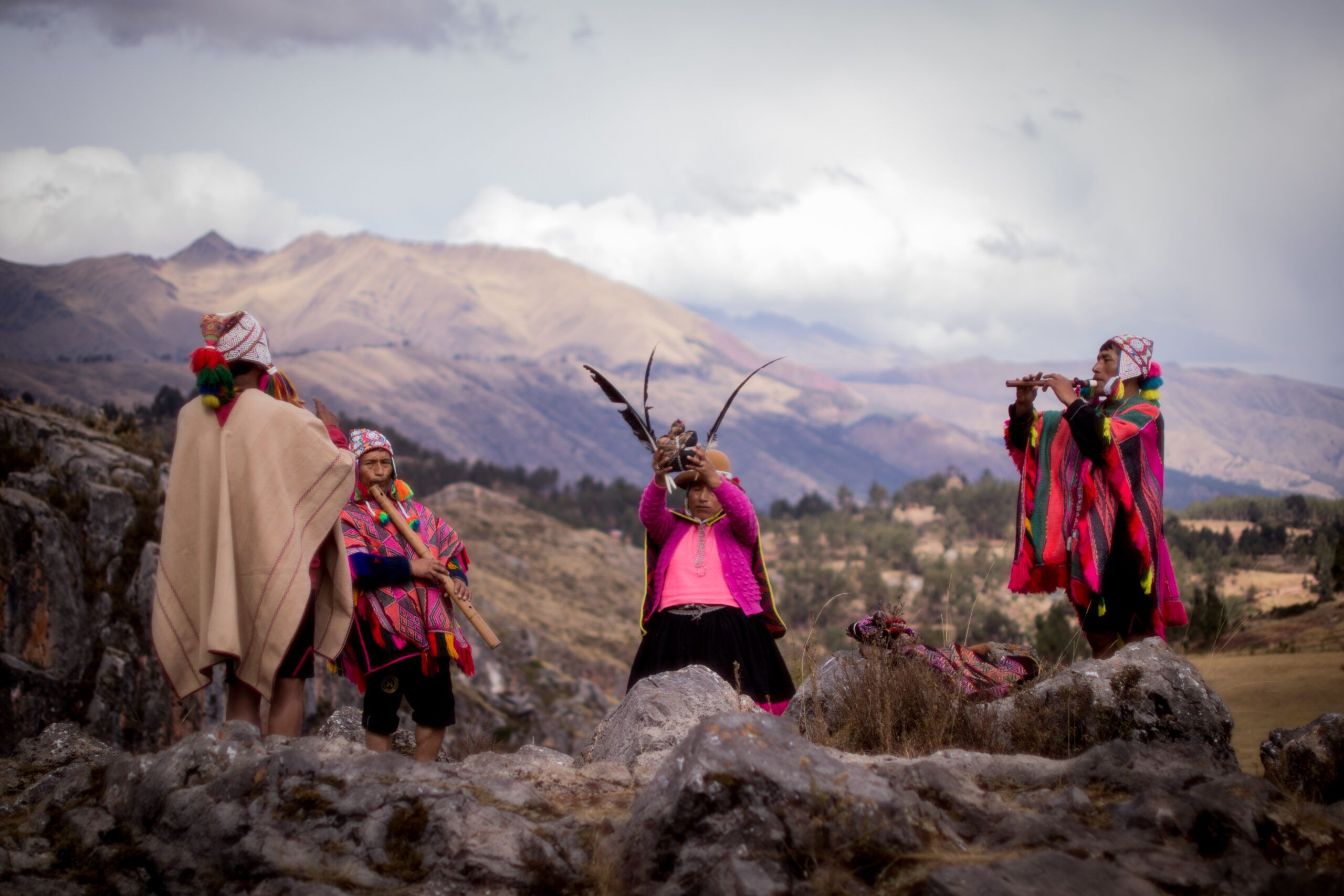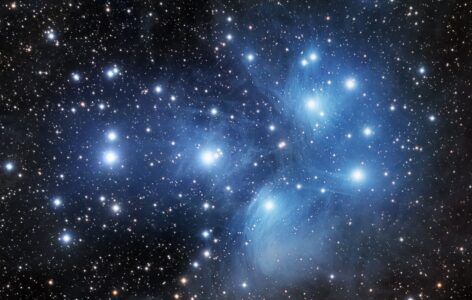Every June, the city of Cusco comes alive with the vibrant celebration of Corpus Christi, a festival where Catholic devotion and Andean cosmology walk side by side. To the outsider, Corpus Christi may appear as a purely Christian feast honoring the presence of Christ in the Eucharist. But to those rooted in the Andes, it is also a profound act of continuity with ancestral ritual.
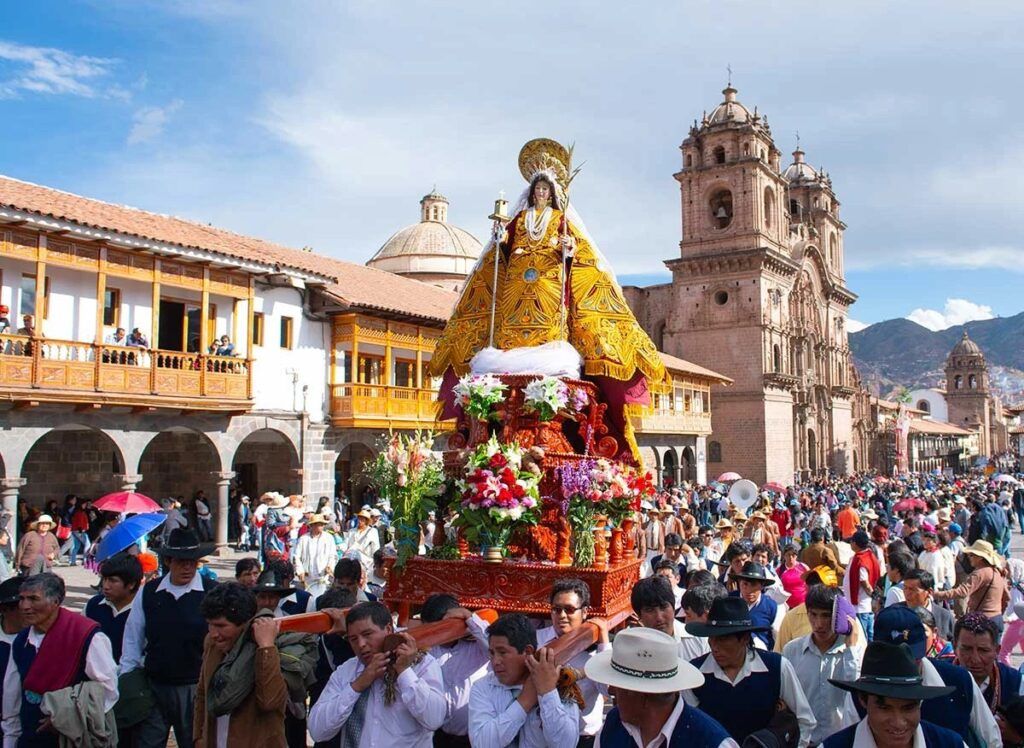
The Procession of Corpus Christi: Saints and Ancestor

During the festival, fifteen saints and virgins representing different parishes are carried through the streets and gathered into the Plaza de Armas. Then they meet the Señor de los Temblores, the protector of Cusco. This grand assembly mirrors ancient Inca ceremonies where the mummified ancestors were brought together into the plaza to reaffirm unity, reciprocity (ayni), and the sacred order of life.
In this way, Corpus Christi becomes more than a Catholic rite—it is a bridge between two worlds, a renewal of both Christian and Andean faith in the living forces that protect the community.
Sacred Food and Complementarity
No Andean festival is complete without food offerings. Corpus Christi is marked by chiriuchu, a traditional dish that unites ingredients from diverse ecological zones:
guinea pig from the highlands, seaweed from the coast, cheese, maize, and rocoto.
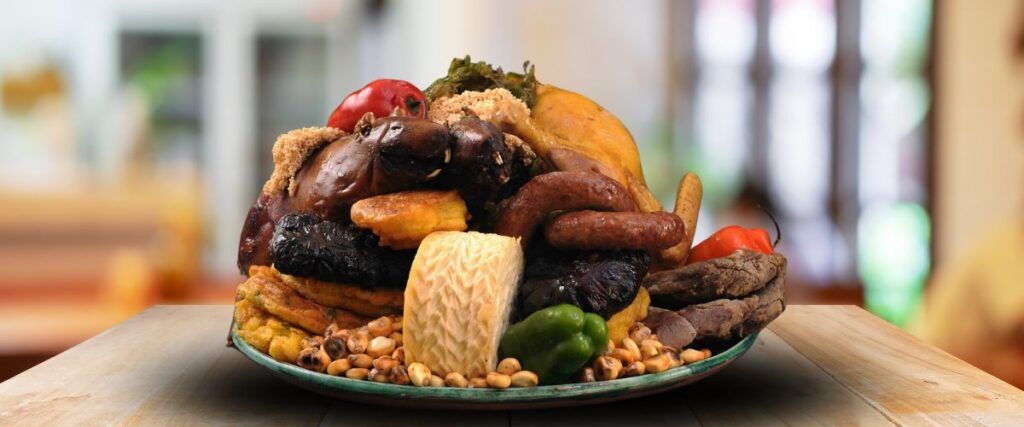
This symbolic plate embodies the Andean principle of complementarity—mountain and sea, masculine and feminine, fire and water—brought together in one sacred act of nourishment.
Through chiriuchu, the Andes reminds us that eating is not only physical sustenance but also a ritual of connection with Pachamama and the cycles of fertility.
Renewal Through Syncretism
What makes Corpus Christi unique is its syncretic power. The Andean people did not abandon their ancient devotion to Apus (sacred mountains) and Pachamama (Mother Earth). Instead, they allowed Christ and the saints to walk alongside their ancestral deities. This coexistence ensures that kawsay—the vital life energy—remains nourished and renewed.

Corpus Christi thus becomes a collective cleansing, a time when communities come together to honor both the Christian God and the Andean cosmos, reaffirming that true strength lies in unity and reciprocity.
References
- Dean, C. (1999). Inka Bodies and the Body of Christ: Corpus Christi in Colonial Cusco. Durham: Duke University Press.
- Flores Ochoa, J. (1998). Fiestas andean-católicas en el Cusco. Cusco: Centro Bartolomé de las Casas.

